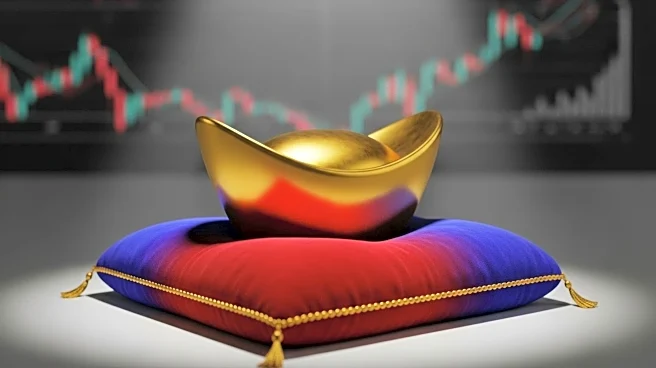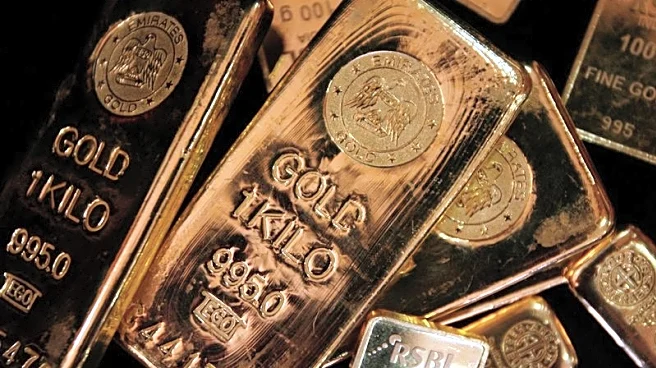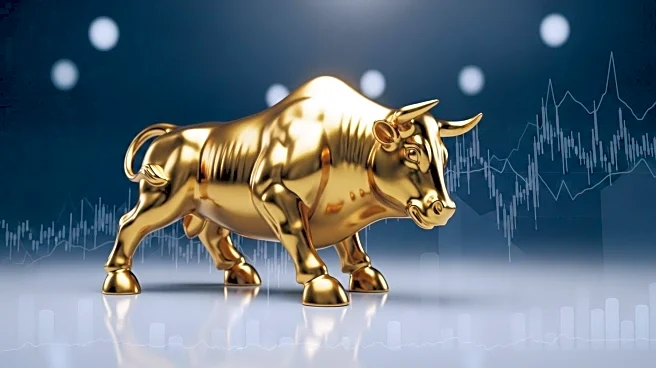What's Happening?
Investors are increasingly turning to gold exchange-traded funds (ETFs) as a safe-haven asset amid economic instability and geopolitical tensions. According to the World Gold Council, global inflows into gold ETFs have reached $64 billion year-to-date, with a record $17.3 billion in September alone. This marks a significant reversal from the previous four years, which saw outflows totaling $23 billion. The surge in interest is driven by concerns over high stock market valuations and the potential for economic policy shifts. State Street Investment Management reported that inflows into U.S. ETFs, such as SPDR Gold Shares, have set all-time records of $35 billion as of the end of September, surpassing the previous full-year record of $29 billion set in 2020.
Why It's Important?
The increased investment in gold ETFs highlights a growing trend among investors seeking stability in uncertain times. Gold is traditionally viewed as a hedge against inflation and economic volatility, making it an attractive option as geopolitical tensions rise and economic policies remain unpredictable. The record inflows suggest that investors are wary of the sustainability of the current stock market boom, particularly in sectors driven by artificial intelligence. This shift could have significant implications for financial markets, as more capital is diverted from equities to commodities like gold. Additionally, the trend underscores the importance of diversification in investment portfolios, as investors look to balance potential gains from high-risk assets with the stability offered by gold.
What's Next?
Analysts predict that the trend of investing in gold ETFs will continue, especially as the Federal Reserve is expected to cut U.S. interest rates into 2026. This could further increase the attractiveness of gold as an investment. Financial institutions like Goldman Sachs anticipate that holdings of gold ETFs in North America and Europe will rise, driven by the need for inflation hedges. Investors are advised to consider allocating a portion of their portfolios to gold, with some experts suggesting a 20% allocation. As the market evolves, investors may also explore other decentralized assets like bitcoin, which are not tied to any government.
Beyond the Headlines
The shift towards gold ETFs reflects broader concerns about the sustainability of the current economic environment. As investors seek refuge from potential market corrections, the role of gold as a decentralized store of value becomes increasingly relevant. This trend may also influence the development of new financial products aimed at providing stability in volatile markets. Furthermore, the growing interest in gold could lead to increased scrutiny of mining practices and environmental impacts, as demand for the metal rises.











